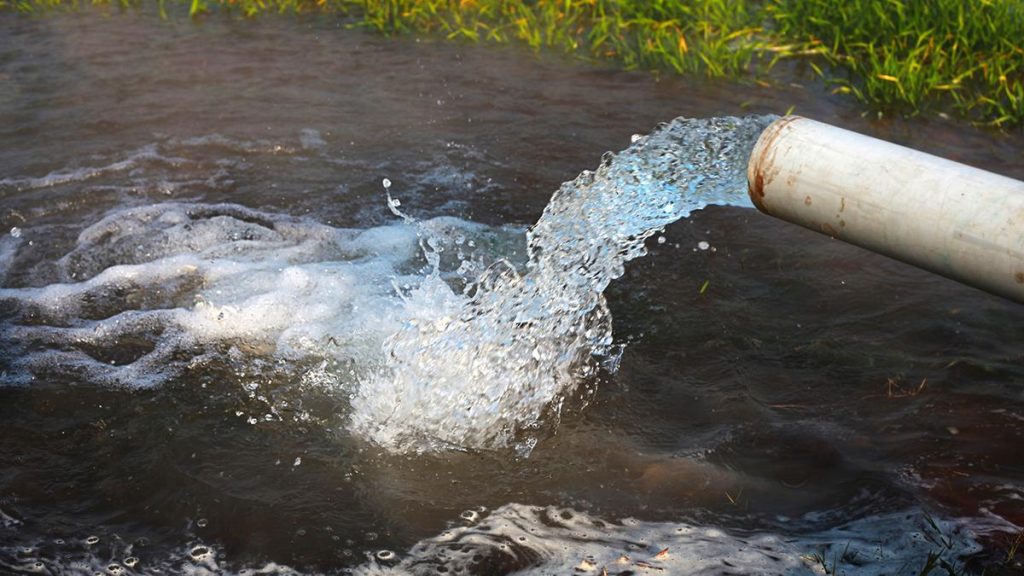
Image used for representational purpose. File
| Photo Credit: Getty Images
The story so far: An assessment of India’s groundwater by the Central Ground Water Board (CGWB) found that several States are grappling with a serious problem of nitrate contamination.
Which are the sources of contamination?
The most concerning finding was that the number of districts with excessive nitrate in their groundwater rose from 359 in 2017 to 440 in 2023. This works out to nearly 56% of India’s districts having excessive nitrate in ground water, defined as having more than 45 mg/l (milligram per litre). Of the 15,239 groundwater samples collected from across the country for testing, 19.8% samples had nitrates — nitrogenous compounds — above safe limits though it must be said that this proportion has not substantially changed since 2017. In the 13,028 samples analysed in 2017 for instance, 21.6% had excessive nitrate. There are two major concerns with excess nitrate content: one is methemoglobinemia, or a reduced ability of red blood cells to carry oxygen.
A bigger problem with excessive nitrates are environmental: once the nitrates in the groundwater rise to the surface and become part of lakes and ponds, algal blooms throttle the health of aquatic ecosystems.
The most common contaminant identified in groundwater is dissolved nitrogen in the form of nitrate in sub-surface waters. Since, the nitrogen content of soil is generally quite low, farmers have to look for external sources of nitrogen by using ammonium nitrate, calcium nitrate, urea, diammonium hydrogen phosphate etc. Although nitrate is the main form in which nitrogen occurs in groundwater, dissolved nitrogen also occurs in the form of ammonium (NH4+), ammonia (NH3), nitrite (NO2-), nitrogen (N2), nitrous oxide (N2O) and organic nitrogen.
Which places had serious contamination?
Rajasthan, Karnataka and Tamil Nadu reported the highest proportion of tested groundwater blocks with nitrate exceeding permissible levels — 49%, 48% and 37% of the tested samples respectively reported numbers beyond the limit.
Rajasthan, Madhya Pradesh and Gujarat have a long-standing nitrate problem with relative levels fairly constant since 2017, the report says. However a growing concern are blocks in central and southern India, which are reporting an increasing trend, and therefore is a reason for worry. “Maharashtra (35.74%), Telangana (27.48%), Andhra Pradesh (23.5%) and Madhya Pradesh (22.58%) also show notable levels of nitrate contamination,” the report notes.
Is nitrate the only chemical contaminant?
Other major chemical contaminants affecting groundwater quality are arsenic, iron, fluoride and uranium. Just as 19.8% samples of tested groundwater had excess nitrate, 9.04% of samples had fluoride levels above the limit.
Fluoride concentrations exceeding the permissible limit were “a major concern” in Rajasthan, Haryana, Karnataka, Andhra Pradesh and Telangana. Rajasthan and Punjab reported the maximum number of samples with uranium concentration exceeding 100 ppb (parts per billion). Anything over 30 ppb is considered unsafe and several of these samples were predominant in regions of Rajasthan, Gujarat, Haryana, Punjab, Tamil Nadu, Andhra Pradesh, and Karnataka, where groundwater was over-exploited: more water was being drawn out than replenished by rains or other means.
What was the state of groundwater in 2024?
Along with its report on groundwater quality, the organisation also produced a report on the quantity of groundwater in various blocks, enumerating the availability of groundwater across India. The CGWB estimates that on the whole, the country’s degree of groundwater extraction is 60.4%, or roughly the same as it has been through the years since 2009. About 73% of the blocks are in the ‘safe’ zone, meaning that they are replenished enough to compensate for water drawn out.
How are groundwater levels measured?
The CGWB relies on a network of about 26,000 groundwater observation wells that require technicians to manually measure the state of groundwater in a region. Since 2023, however, around 16,000-17,000 digital water level recorders were connected to piezometers in the wells. Piezometers measure groundwater levels and transmit the information digitally to a centralised location. In the next three years, the CGWB aims to increase its network from the existing 26,000 to about 40,000. When combined with similar networks possessed by other institutions, India will have about 67,000 digitally recordable units to monitor ground water dynamics.
Published – January 12, 2025 02:10 am IST







